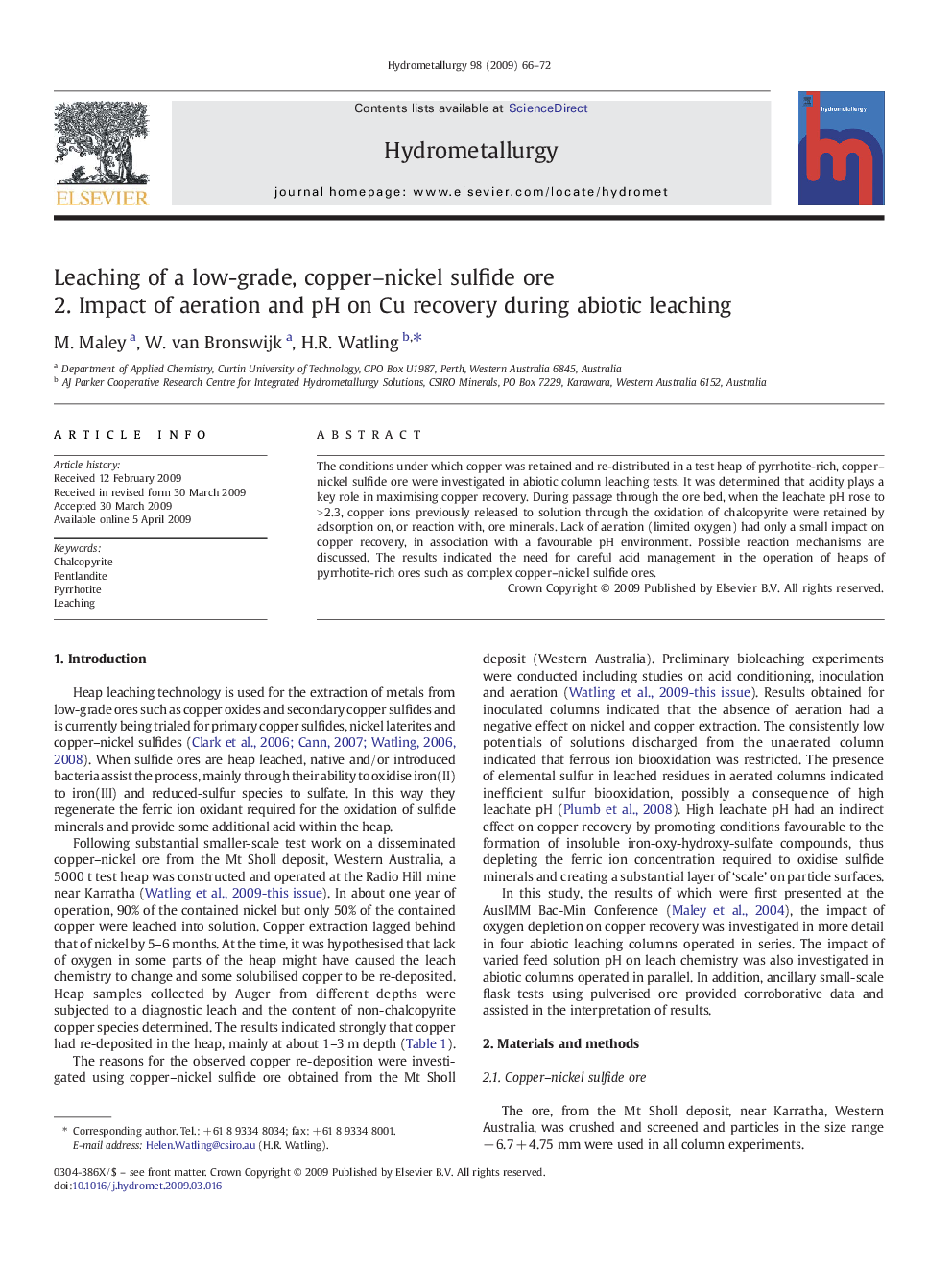| Article ID | Journal | Published Year | Pages | File Type |
|---|---|---|---|---|
| 212932 | Hydrometallurgy | 2009 | 7 Pages |
The conditions under which copper was retained and re-distributed in a test heap of pyrrhotite-rich, copper–nickel sulfide ore were investigated in abiotic column leaching tests. It was determined that acidity plays a key role in maximising copper recovery. During passage through the ore bed, when the leachate pH rose to > 2.3, copper ions previously released to solution through the oxidation of chalcopyrite were retained by adsorption on, or reaction with, ore minerals. Lack of aeration (limited oxygen) had only a small impact on copper recovery, in association with a favourable pH environment. Possible reaction mechanisms are discussed. The results indicated the need for careful acid management in the operation of heaps of pyrrhotite-rich ores such as complex copper–nickel sulfide ores.
